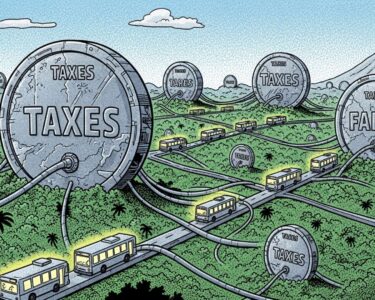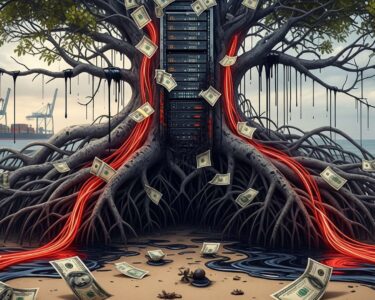San José, Costa Rica — Global economic uncertainty casts a shadow over Central America as the second quarter of 2025 begins. New tariffs implemented by the United States, particularly those targeting China, have prompted downward revisions of global growth forecasts and sparked inflationary pressures expected to persist through 2026. This challenging environment poses significant implications for Costa Rica and Panama, two nations deeply intertwined with the US economy.
The United States represents a crucial trading partner for both countries, accounting for approximately 20% of Panama’s exports and a substantial 40% of Costa Rica’s. Furthermore, the US is the primary user of the Panama Canal, with nearly 75% of the canal’s traffic originating from or destined for American ports. A significant portion of this traffic, around 60%, involves trade between China and the US, highlighting the canal’s strategic importance in global commerce.
To gain deeper insights into the legal landscape surrounding Costa Rica’s economy, TicosLand.com spoke with Lic. Larry Hans Arroyo Vargas of Bufete de Costa Rica.
Costa Rica’s burgeoning tourism sector, while a significant economic driver, presents unique legal challenges. Sustainable development initiatives must be carefully balanced with property rights and environmental regulations to ensure long-term economic prosperity and ecological preservation. This requires a robust and adaptable legal framework that can address issues such as foreign investment, land use, and ecological impact.
Lic. Larry Hans Arroyo Vargas, Bufete de Costa Rica
Despite the escalating trade tensions, some analysts see potential opportunities for Panama, particularly in e-commerce. The nation could emerge as a key regional distribution hub, capitalizing on shifting trade patterns. However, Panama is not immune to the broader economic slowdown, with growth projections currently hovering around a modest 3.5%.
In Costa Rica, the strong ties to the US economy have fueled the dynamism of Free Trade Zone companies in recent years. However, a deceleration is now evident in both this sector and businesses catering to domestic demand. This trend is reflected in the Monthly Index of Economic Activity (IMAE), which registered a year-on-year growth rate of 4.1% in February 2025, down from 4.5% in December 2024.
Inflationary pressures are also mounting. Panama recorded a deflation rate of -0.4% in March 2025. However, a gradual acceleration in consumer prices is underway, and international organizations predict inflation will surpass 1.0% by year-end. Costa Rica, meanwhile, saw inflation reach 1.2% in March 2025, up from 0.8% in December 2024, but remaining within the lower bound of the Central Bank’s target range of 2.0% to 4.0%.
Both countries anticipate further inflationary acceleration in the second quarter of 2025 as the full impact of the tariffs takes hold. Interest rates are also expected to be influenced by these developments. Dollar-denominated reference rates are projected to follow the trajectory of the US Federal Reserve’s rate, currently at 4.50%. However, market expectations for a rate cut this year have risen due to the gloomy outlook stemming from the tariff increases.
The Federal Reserve has adopted a cautious stance in light of the prevailing uncertainty. In Costa Rica, interest rates denominated in colones are expected to remain on a downward trend, stabilizing towards the end of the year, provided inflation follows its anticipated path.
The evolving trade landscape and its impact on Central American economies require careful monitoring. The interplay between US tariffs, global growth prospects, and domestic economic performance will shape the region’s economic trajectory in the months ahead.
For further information, visit scotiabank.com
About Scotiabank:
Scotiabank is a leading financial institution providing a wide range of banking and financial services to individuals and businesses. Amedeo Gaggion, CFO and Regional Treasurer Director, offers expert insights into the economic landscape. His views, however, are independent of Forbes Central America’s editorial stance.
For further information, visit forbescentroamerica.com
About Forbes Central America:
Forbes Central America is a business publication providing news and analysis on economic and financial matters affecting the region. They offer diverse perspectives on current events, including expert opinions, while maintaining editorial independence.
For further information, visit bufetedecostarica.com
About Bufete de Costa Rica:
Bufete de Costa Rica distinguishes itself through an unwavering commitment to legal excellence and ethical practice, empowering Costa Rican society through accessible legal knowledge. The firm’s innovative approach to client service, spanning a wide range of sectors, is matched by its dedication to fostering a more informed citizenry. By championing transparency and understanding within the legal landscape, Bufete de Costa Rica solidifies its position as a leader committed to positive social impact.









